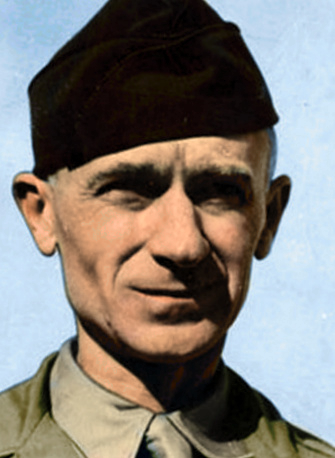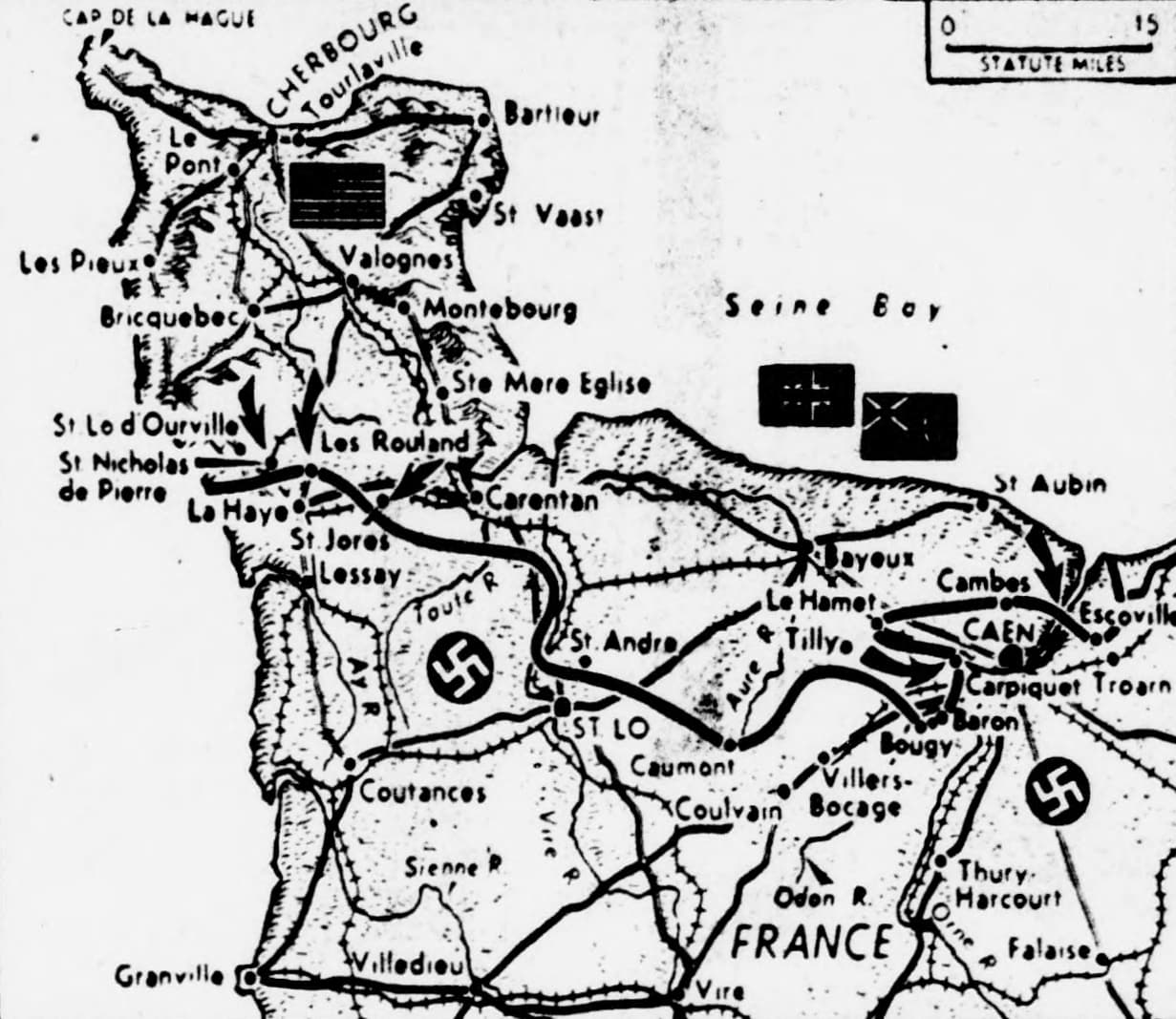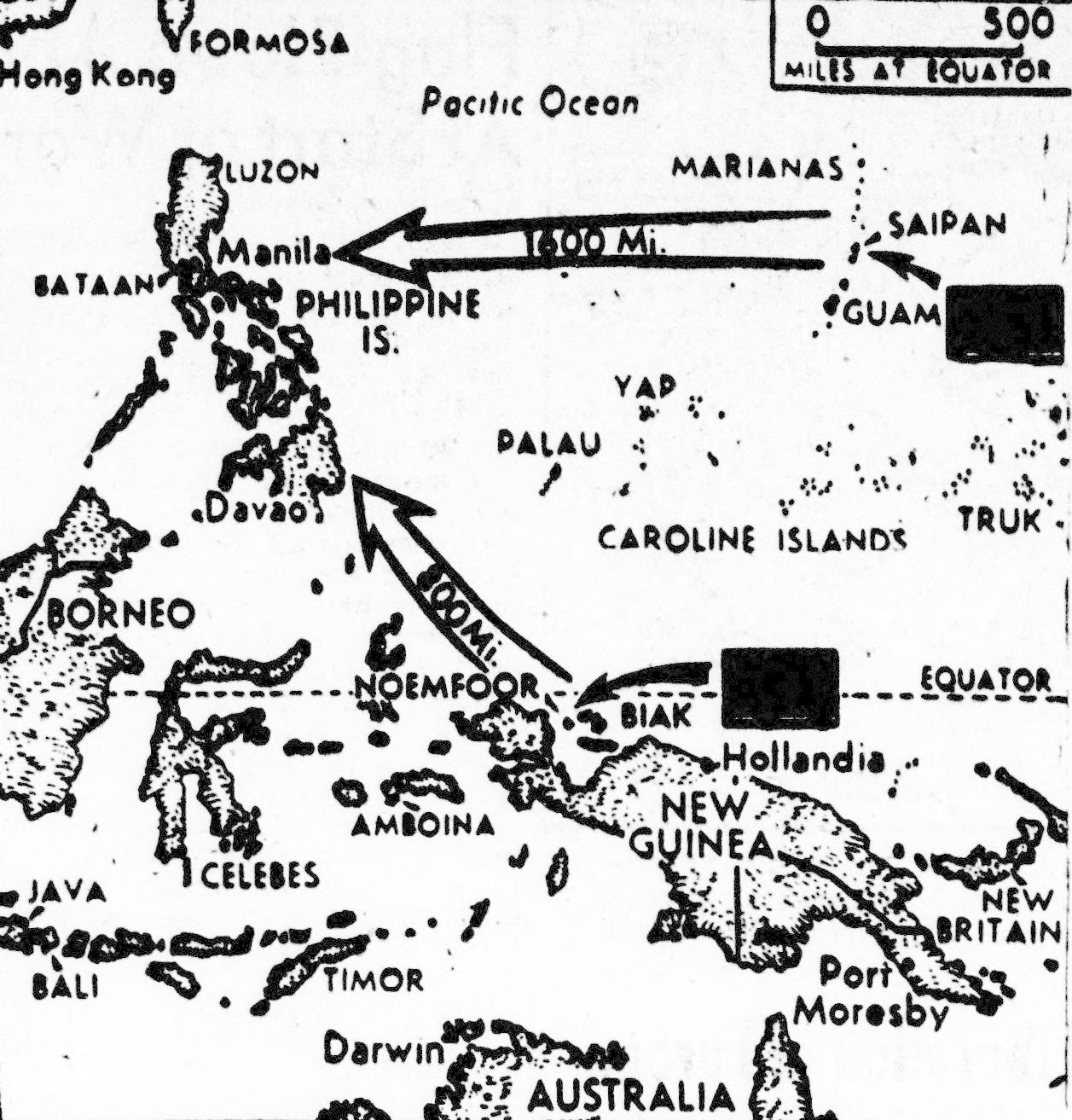The Pittsburgh Press (July 3, 1944)

Roving Reporter
By Ernie Pyle
In Normandy, France – (by wireless)
This ack-ack crew of mine is having is first taste of war. And after three weeks or so of it they feel that they are the best gun crew in the best battery of the best ack-ack battalion on the beachhead.
It would be close to impossible for a German bomber to pick out their position at night, yet this crew feels that the Germans have singled them out because they’re so good. As far as I can learn, practically all the other gun crews feel the same way. That’s what is known in military terms as good morale.
My crew consists of 13 men. Some of them operate the dials on the gun, others load and fire it, others lug the big shells from a storage pit a few feet away.
These big 90mm guns usually operate in batteries, and a battery consists of four guns and the family of technicians necessary to operate the many scientific devices that control the guns.
The four guns of this particular battery are dug into the ground in a small open field, about 50 yards apart. The gunners sleep in pup tents or under halftracks hidden under trees and camouflage nets.
The boys work all night and sleep in the daytime. They haven’t dug foxholes, for the only danger is at night and they are up firing all night.
The guns require a great deal of daytime work to keep them in shape, so half of the boys sleep in the forenoon and half in the afternoon while the other half work.
Their life is rugged, but they don’t see the seamiest side of the war. They stay quite a while in one place, which makes for comfort, and they are beyond enemy artillery range. Their only danger is from bombing or strafing, and that is not too great. They are so new at war that they still try to keep themselves clean. They shave and wash their clothes regularly.
Their service section has not come over yet from England, so they have to cook their own meals. They’re pretty sick of this and will be glad when the service boys and field kitchens catch up with them. they eat ten-in-one rations, heating them over a fire of wooden sticks sunk into a shallow hole in the ground.
The sergeant who is commander of my gun crew is a farm boy from Iowa, and none of the crew are past their middle 20s. only two of the 13 are married. They have been overseas more than six months, and like everybody else they are terribly anxious to go home. They like to think in terms of anniversaries, and much of their conversation is given to remembering what they were doing a year ago today when they were in camp back in America. They all hope they won’t have to go to the Pacific when the European war is over.
My crew are a swell bunch of boys. They all work hard and they work well together. There are no goldbrickers in the crew. As in any group of a dozen men, some are talkative and some are quiet. There are no smart-alecks among them.
Only one man in the crew speaks French. That one has already made friends with the farmers nearby, and they get such stuff as eggs and butter occasionally. They have been promised some chicken, but it hasn’t showed up yet.
Although the noise and concussions of their gun are terrific, they have got used to it and none of them wears cotton in his ears. They say the two best morale-boosters are The Stars and Stripes and letters from home.
My boys are very proud of their first night on the soil of France. They began firing immediately from a field not far from the beach. The snipers were still thick in the surrounding hedges, and bullets were singing around them all night. The boys like to tell over and over how the infantry all around them were crouching and crawling along while they had to stand straight up and dig their guns in.
It takes about 12 hours of good hard work to dig in the guns when they move to a new position. They dig in one gun at a time while the three others are firing. My gun is dug into a circular pit about four feet deep and 20 feet across. This has been rimmed with a parapet of sandbags and dirt, until when you stand on the floor of the pit you can just see over the top. The boys are safe down there from anything but a direct hit.
Their gun is covered in the daytime by a large camouflage net. My crew fires anywhere from 10 to 150 shells a night. In the very early days on the beachhead, they kept firing one night until they had only half a dozen shells left. But the supply has been built up now, and there is no danger of their running short again.
The first night I was with them was a slow night and they fired only nine shells. The boys were terribly disappointed. They said it would have to turn out that the night I was with them would be the quietest and also the coldest they had ever had.
So just because of that I stayed a second night with them. And that time we fired all night long. It was indicated that we had brought down seven of the 15 planes we fired at and the boys were elated.



